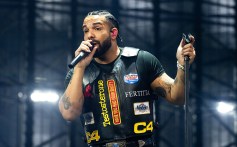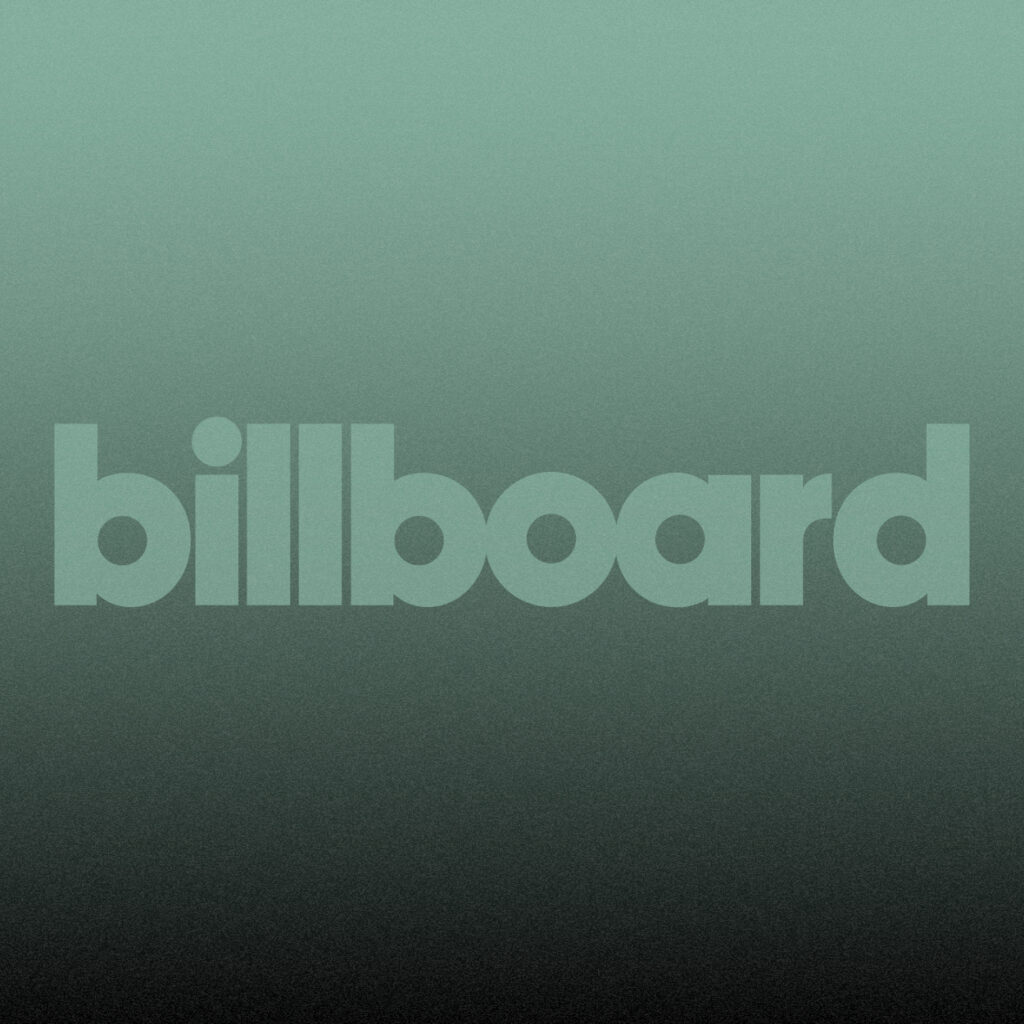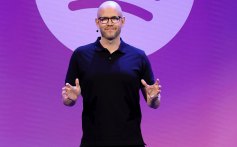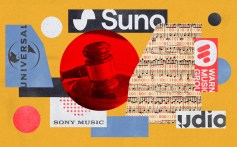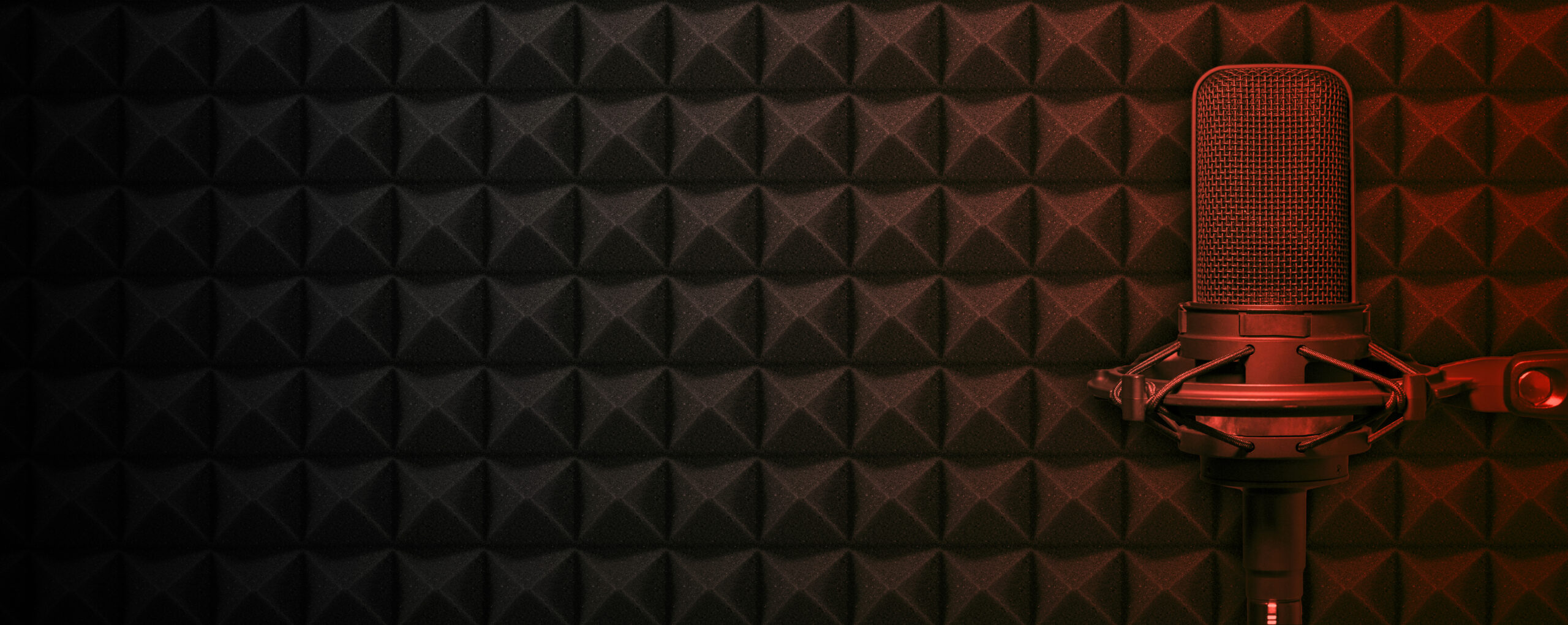Streaming
Page: 4
Trending on Billboard
Echoing disagreements between YouTube and music rights holders, Alphabet-owned YouTube TV is currently in fraught negotiations with Disney over the amounts the pay TV streaming platform is willing to pay for the company’s TV channels, which were pulled from YouTube TV on Oct. 30 after the two sides failed to agree on the terms of a licensing renewal.
The fracas is part of a larger pattern, artist manager and businessman Irving Azoff wrote in a Nov. 5 op-ed at Billboard. Azoff, a longtime YouTube critic, called the company “a behemoth bully” that uses its vast market power to coerce content owners. “The playbook is always the same: if you refuse to accept YouTube’s below-market terms, YouTube threatens to go dark until you capitulate.”
Related
Similar disagreements have plagued the music industry’s relationship with YouTube over the decades. (YouTube TV is run separately from YouTube, which generates most of its income from advertising.) Most notably, Warner Music Group pulled its catalog off YouTube in 2008 after licensing negotiations broke down. Over the years, rights owners have frequently — and publicly — complained about YouTube’s relatively low royalty payouts and a business model that allows for user-generated content that often includes copyright-protected music.
The pay TV dispute pits one of the world’s largest tech companies against the owner of some of America’s most popular TV channels. Disney owns more than 20 TV channels that span sports (ESPN, ACC Network, SEC Network), entertainment (FX, Freeform, Localish), family (Disney Channel), National Geographic and ABC and its local affiliates. Disney CEO Bob Iger has called these broadcast TV brands an “asset” that operate alongside its growing streaming platforms, Disney+ and Hulu.
News reports say that Disney offered YouTube TV terms commensurate with its latest deals with the largest pay TV providers, Comcast and Charter, while YouTube insists it has “been working in good faith” on a deal “that pays them fairly” for their content. However, Disney has cited YouTube TV’s “repeated refusal to negotiate in good faith” and demand for preferential treatment.
Related
Disputes over carriage — the agreements in which a multi-channel video distributor includes a TV network’s channels — are not uncommon. YouTube also removed Televisa/Univision channels in October and narrowly averted a blackout with Fox in August. As for Disney, carriage disputes caused its channels to briefly go missing from DirecTV in 2024, Charter in 2023 and Dish in 2022.
But the Disney-YouTube battle isn’t a battle of equals — or close to it. A relative newcomer to the pay TV business, eight-year-old YouTube TV is the fourth-largest pay TV provider in the U.S. with nearly 10 million subscribers. But YouTube TV is a small fraction of parent company Alphabet’s total business. At $83 per month and 10 million subscribers, YouTube TV generated $7.4 billion in the first nine months of 2025 — just 2.6% of parent company Alphabet’s $289 billion of revenue in that period.
For Disney, the loss of carriage fees works out to approximately $2 billion annually, or 2% of Disney’s revenues, Lightshed Partners’ Rich Greenfield told CNBC on Monday (Nov. 3). That weighs more heavily on Disney, which generated $72 billion of revenue in the first nine months of its fiscal year (the company releases fiscal year results on Nov. 13), than YouTube TV. “When Charter loses ESPN, everybody goes, ‘How can Charter survive?’,” said Greenfield. “There’s not one investor going, ‘God, is Google going to survive this?’”
Failing to reach a resolution could drive consumers to find Disney programming elsewhere. Consumers can access Disney or any other TV content in numerous places. Desired sports content such as Monday Night Football is available through ESPN Unlimited for $29.99 per month or $299.99 per year. Bundling ESPN Unlimited with Hulu — wholly owned by Disney — and Disney+ offers sports and a wider variety of programming that costs $29.99 per month with ads or $38.99 per month without ads.
A new survey from Drive Research found that 24% of YouTube subscribers have already canceled or plan to cancel their YouTube TV subscription as a result of the dispute. Additionally, 30% of subscribers said they have subscribed or intend to subscribe to ESPN Unlimited or Hulu’s live sports plan to maintain access to sporting events. Clearly, the backlash to the Disney fracas is real — but a giant like YouTube TV can afford to shed subscribers in a way other carriers likely couldn’t.
Trending on Billboard
Sounds Right, a charitable cross-DSP playlist featuring music that incorporates the sounds of nature, will now allow any artist to submit their music to the project, it was announced Wednesday (Nov. 5).
Sounds Right initially launched in April 2024 with a playlist featuring new and older tracks with sounds like bird calls, waves, wind and other greatest hits of the mother nature soundscape, woven into music by artists like David Bowie, Brian Eno, Hozier and Ellie Goulding. Royalties generated by this music, which includes 36 original songs that were added this past April, are directed to conservation efforts.
Related
Now, as scientists and activists from around the world gather in Belem, Brazil for the COP30 UN Climate Conference (Trump administration officials recently announced that no high-level representatives from the U.S. government will attend the event), Sounds Right has announced an update that allows artists to help fund conservation work by officially crediting “Nature” in their music and submitting it for inclusion on the playlist.
Accepted submissions will be incorporated into the Sounds Right playlist, with 50% of royalties raised from any given song going to the artist and the other 50% going to environmental causes. Submissions are open now.
This past Saturday (Nov. 1), Sounds Right announced that the project has so far raised a total of $400,000 for Indigenous and community-led conservation in the Amazon and Congo Basin regions, building on $225,000 it directed to projects in the Tropical Andes in 2024. The funds were announced on stage at Saturday’s Global Citizen Amazonia concert in Belem, which was broadcast throughout Brazil.
Related
Sounds Right has now added 14 new tracks to the playlist, all of which celebrate the natural world of the Amazon and Africa. The Amazonian contributions come from artists Alexia Evellyn, Pedrina, Antonio Sanchez, Chancha Via Circuito, Systema Solar and Monte (aka Simon Mejia), while the music of artists Juls, Phila Dlozi, Olivetheboy, Bien, Blinky Bill, and Lady Donli showcases the sounds of the Congo Basin region.
“This collection of tracks is a powerful expression of how artists can use their creativity to celebrate and protect the natural world at such a critical moment for our planet,” EarthPercent co-executive director Cathy Runciman tells Billboard. “From Alexia Evellyn recording the rhythms of the Amazon’s rivers and birds to Juls blending Congo Basin forest ambience into Afrobeats, and Antonio Sánchez turning birdsong into percussion, it’s inspiring to see such diverse artists uniting to honor these vital ecosystems and leading a movement to bring nature back into music and culture.”
“It’s an honor and a thrill to be part of Sounds Right,” adds the Grammy-winning Sanchez, whose contribution “Drumming with the Birds” explores the percussive rhythms of Amazonian birdlife. “I believe it’s vital to keep opening new avenues for people to connect with the importance of preserving and protecting Mother Nature. This collaboration, inspired by the Amazon and its remarkable avian life, celebrates that connection. I hope you enjoy it as much as I enjoyed creating it.”
Brazilian producer Alok will also soon release a special track for the Sounds Right project, with the artist saying in a statement that “nature has always played an essential role in music, and the time has come for it to be recognized for that.”
Trending on Billboard
Spotify is facing a class action lawsuit claiming its Discovery Mode and editorial playlists are a “modern form of payola” that allow record labels and artists to secretly pay to promote their music.
The lawsuit, filed on Wednesday (Nov. 5) in New York, alleges that Spotify’s recommendation tools are a “deceptive pay-for-play” program, but that the streamer misleads consumers into trusting that they are neutral and based on personal musical tastes.
Related
“Spotify exploits that trust by marketing itself as a platform that offers organic music recommendations — whether through its algorithmic or curated playlists — only to secretly sell those recommendations to the highest bidder,” reads the lawsuit, obtained by Billboard.
The case was filed by a Spotify subscriber named Genevieve Capolongo, who seeks to represent “millions” of other users who were allegedly misled by Spotify’s offerings. Her lawyers say she used the platform’s personalization features for years, but “kept hearing the same major-label tracks” that “bore little resemblance to her listening habits.”
In a statement to Billboard, a spokesperson for Spotify called the accusations “nonsense” and pointed to its detailed explanation of the program.
“Not only do they misrepresent what Discovery Mode is and how it works, but they are riddled with misunderstandings and inaccuracies,” the company said. “Discovery Mode is a feature artists can use to flag priority tracks for algorithmic consideration in limited contexts: Radio, Autoplay, and certain Mixes. It doesn’t buy plays, it doesn’t affect editorial playlists, and it’s clearly disclosed in the app and on our website.”
Related
The new case is the latest to claim that major labels are buying placement on Spotify to boost their artists. The high-profile lawsuit filed by Drake over Kendrick Lamar’s “Not Like Us” included accusations that Universal Music Group used bots and payments to juice the song’s popularity on many platforms, including Spotify. Another case, filed earlier this week, claims that Spotify “turned a blind eye” to bots and other forms of fraudulent streams designed to inflate certain artists.
First unveiled in 2020, Discovery Mode allows artists and labels to get boosted on Spotify in return for accepting reduced royalties. It was initially met with scrutiny, including a Congressional investigation, over its similarities to payola, or the practice of secretly paying radio stations for airplay. But it has become a popular industry marketing tool around the release of new music.
Much of Wednesday’s lawsuit is focused on the extent to which Spotify discloses the exact parameters of Discovery Mode to its users. Though listeners are offered a link to an “About Recommendations” explainer when using it, Capolongo’s attorneys say that isn’t enough.
“Telling users that ‘commercial considerations may influence’ recommendations does not reveal which songs are being promoted commercially and which are being recommended organically,” her lawyers write. “Without that specificity, users cannot distinguish between genuine personalization and covert advertising.”
Related
The lawsuit also claims that Spotify’s editorial playlists, like the hugely influential Today’s Top Hits and RapCaviar, are also subject to pay-for-play. But it fails to offer any concrete examples of such payments, citing only unnamed “industry insiders” confirming that it happens and circumstantial evidence about the “disproportionate” rates of major-label music on such playlists.
In technical terms, the lawsuit claims Spotify’s conduct violated New York state law with deceptive practices and false advertising. It also claims Capolongo was fraudulently induced to subscribe and that Spotify was unjustly enriched by its behavior.
In more straightforward language, Capolongo says she simply wouldn’t have paid for Spotify if she had “known the truth” about the service: “That Spotify’s playlists and recommendations are shaped by undisclosed pay-for-play arrangements and hidden commercial incentives, not by her listening history alone.”
Trending on Billboard
David Israelite’s guest column on October 23, 2025 explained how little music creators get paid across different streaming services. I just want to lay out the facts and be clear: YouTube pays the least for music, full stop. They always have and always will unless someone stands up to them. They’ll throw up smoke screens and tempt you to look the other way, but let’s not be fooled.
YouTube recently touted that it paid artists $8 billion over the past year. This sounds impressive, but it’s not. During the same period, Spotify generated roughly $18 billion in revenue and paid about $12 billion to music rights holders — nearly 67% of its revenue. By contrast, YouTube generated $60 billion in revenue and paid only $8 billion to rights holders — about 13%. YouTube will say they’re not just a music service. But I would argue that YouTube never would have become such a successful platform without music, and even if only one-third of their revenue comes from music (and it’s likely higher), they certainly should be paying more than Spotify, not 50% less.
Related
How does YouTube pay less than their competitors? They are a behemoth bully. They have 2.7 billion monthly active users and more than $60 billion in annual revenue. It’s the dominant video platform, with more hours streamed than Netflix. It’s the largest music service, with more users than Spotify. And in the “traditional” TV space, it’s on track to surpass Comcast as the largest U.S. cable provider. This company now owns audience and content delivery in a way the world has never seen before.
Their tyranny isn’t just limited to music. If you read the headlines, you will see a pattern of coercion: YouTube vs. Televisa/Univision. YouTube vs. NBCUniversal. YouTube vs. Fox. YouTube vs. Paramount. And now YouTube vs. Disney. The playbook is always the same: if you refuse to accept YouTube’s below-market terms, YouTube threatens to go dark until you capitulate. They then shift the blame and spin the story — when in reality, YouTube just wants to pay less.
And now they’re trying to dictate terms to consumers too. If you’re a YouTube TV subscriber, you received an email saying “if Disney’s content is unavailable for an extended period of time,” YouTube will give you a paltry $20 credit. So, YouTube gets to unilaterally decide for consumers how long is too long and how much ESPN is worth to them? They bully the people creating the content and then they bully the consumers who want access to it.
Related
Disney understands that “content is king,” but at YouTube, content is just a pawn in their game. And the game at YouTube is clearly about aggregating services and market power (across Google and YouTube) and using that market power to strong-arm everyone in the ecosystem — rights holders, content creators, advertisers, everyone — for their own financial gain. YouTube is showing us what happens when unchecked power and greed collide.
Thankfully, Disney is standing up to YouTube, and we all need to support Disney because enough is enough. As artists, consumers, and companies, let’s voice our support for Disney in this battle with YouTube. And in parallel, Washington needs to take a good hard look at YouTube’s abuse of market power and explore whether it’s time to break up Google so that YouTube, YouTube Music, and YouTube TV are separate businesses that finally have to compete on a level playing field.
YouTube: without the artists, athletes, and actors, there is no business.
Irving Azoff holds the title of chairman and CEO of The Azoff Company and is the personal manager of the legendary Eagles, Jon Bon Jovi, U2, John Mayer, Van Halen, Gwen Stefani, Steely Dan, Maroon 5, and many others. The Azoff Company is a privately held media and entertainment company dedicated to investing in positively disruptive businesses that put artists and fans first. Azoff was inducted into the Rock and Roll Hall of Fame in 2020.
All products and services featured are independently chosen by editors. However, Billboard may receive a commission on orders placed through its retail links, and the retailer may receive certain auditable data for accounting purposes.
If you’re having Wicked withdrawals from waiting for the second film’s release, you’re not alone.
NBC is feeding fans’ love for Wicked ahead of the movie’s Nov. 21 release date with a TV special titled Wicked: One Wonderful Night. The two-hour special airs for one night only on Thursday, Nov. 6, at 8 p.m. ET via the network.
This moment is one fans won’t want to miss. Below, we’re showing you how you can watch the special live and stream it the next day. No FOMO here.
Explore
See latest videos, charts and news
Where to Watch NBC’s Wicked: One Wonderful Night Special
DIRECTV is our top choice for those looking to watch the special live for free with the service’s five-day free trial. A subscription, which gives you access to watch NBC, runs you just $49.99 for the first month of service ($89.99 a month afterward).
You’ll get access to live TV, local networks such as NBC, ABC and PBS, and you can also watch many cable networks, including FS1, Lifetime, FX, AMC, A&E, Bravo, BET, MTV, Paramount Network, Cartoon Network, VH1, Fuse, CNN, Food Network, CNBC and many others (some local channels are not available in select markets). That’s more than 90 channels that you can tap into, once you’re done watching the Wicked special, of course.
If you don’t have access to live TV, not to fret. You can watch the special the next day, Friday, Nov. 7, via Peacock. A standard subscription to the streaming service runs you $10.99 a month, while the commercial-free Premium Plus is $16.99 a month. With a subscription to the service, users have access to an expansive library of movies, along with NBC, Bravo shows and Peacock Originals.
Unlike other streaming services, Peacock has a more diverse library with titles usually not seen on other platforms. The service is also one of the more affordable ones on our list.
If you don’t have a DIRECTV account, you can also always watch the special live with Fubo TV. To watch, you’ll want to subscribe to a Fubo TV Pro plan, which includes NBC, for $54.99 for the first month ($84.99 a month afterward). When you sign up for the service right now, you’ll be saving yourself $30 off for the first month of service. Plus, Fubo has a seven-day free trial to watch the Wicked TV special for free.
Sling TV is another option for those looking to watch the special live via the service’s Sling Blue or Sling Orange + Blue plans. A monthly Sling Blue subscription costs $50.99, while a Sling Orange + Blue bundle will run you just $29.99 right now for your first month. Both subscriptions give users access to top news, sports and entertainment channels, including NBC along with ESPN, NFL Network, USA, TNT, Bravo, FOX News, CNN, and more. Sports Extra includes SEC, ACC, Big 10, NFL RedZone, ESPNU, Golf Channel, and more.
The event features musical performances — both from Ariana Grande and Cynthia Erivo — plus appearances from Michelle Yeoh, Jeff Goldblum, Ethan Slater, Saturday Night Live’s Bowen Yang and Marissa Bode. Fans also may just get a sneak peek of Wicked: For Good if they stick around long enough.
The special was filmed in October at the iconic Dolby Theatre in Los Angeles in front of a live audience. Per a synopsis provided by NBC, “Wicked: One Wonderful Night transforms the legendary venue into a breathtaking Emerald City-inspired set, complete with a 37-piece live orchestra led by the award-winning musical director Stephen Oremus, plus jaw-dropping musical numbers and unforgettable performances.”
More About Wicked: For Good
Following the box office success that was Wicked in 2024, Wicked: For Good hits theaters on Friday, Nov. 21, just one day shy of the one-year anniversary of the film’s first half. The sequel was first announced on X in April from director Jon M. Chu’s “OzPhone.” The filmmaker wrote at the time, “With more space, we can tell the story of Wicked as it was meant to be told while bringing even more depth and surprise to the journeys of these beloved characters.”
Following the cheeky post, fans and followers of the franchise were treated to a trailer on June 4, sharing first looks at Glinda and Elphaba’s journeys following the very dramatic “Defying Gravity” sequence and a hefty cliffhanger folks were left with in part one. In the meantime, watch the trailer for Wicked: One Wonderful Night below:
All products and services featured are independently chosen by editors. However, Billboard may receive a commission on orders placed through its retail links, and the retailer may receive certain auditable data for accounting purposes.
Love & Hip Hop: Miami is back — this time, for its seventh and final season.
We’re waving goodbye to the star-studded cast of the reality show, a cast that we’ve seen through some major drama and epic music moments since 2018. Season 7 is slated to premiere Tuesday (Nov. 4) at 8 p.m. ET and will air on BET. Subsequent episodes will air every Tuesday on BET.
The final season is sure to be a trip based on a brief look at the season’s first episode, titled “The Last Laugh.” In the episode, Ghanaian actor and certified goofball Michael Blackson gets ready for a big move to Miami, while hiding a big secret from his pregnant fiancée Rada. And we see Amara clock Miami Tip for starting drama with the wife of her children’s father. We also see trouble in Miami’s blue waters emerge when women from rapper Trick Daddy’s past re-emerge, further stirring the pot.
Explore
See latest videos, charts and news
If you’ve cut the cord on cable, but you’re looking to catch up on all the drama this last season has to offer, we’ve got you covered. Below, we’ll show you how to watch tonight’s episode and all the juicy episodes to come.
How to Stream Love & Hip Hop: Miami
Looking for a way to watch the highly anticipated final season without cable? The hit BET series is currently available on a plethora of streaming services. Our pick? We choose Philo. The show is free to watch with a seven-day free trial. A subscription to Philo gives you access to BET for just $33 a month. For our musically-inclined readers, Philo also includes networks like AXS TV, Fandor, CMT, MTV, MTV Classic, VH1 and more. With a subscription, you’ll have access to watch more than 70 cable networks including AMC, A&E, Animal Planet, BBC America, Cartoon Network, Comedy Central, Discovery Channel, EarthX, Food Network, Game Show Network, Hallmark Channel, HGTV and so much more.
DIRECTV is another great option for those looking to stream the BET show. A standard subscription to DIRECTV, which gives you access to watch the Love & Hip Hop franchise, will run you just $59.99 a month under the service’s CHOICE plan. You’ll gets you access to live TV, local networks such as NBC, ABC and PBS, and you can also watch many cable networks, including FS1, Lifetime, FX, AMC, A&E, Bravo, BET, MTV, Paramount Network, Cartoon Network, VH1, Fuse, CNN, Food Network, CNBC and many others (Some local channel not available in select markets.). That’s over 125 plus channels that you can tap into, once you’re done watching Love & Hip Hop, of course.
Another option for our readers is a Hulu + Live TV subscription, given that BET is included in the live TV channel lineup. A subscription to the service (with ads) will cost approximately $82.99 per month, while the plan without ads goes for $95.99 per month. This subscription gives you access to the wide plethora of titles in Hulu’s library, along with live TV programs 24/7. This is one of the more pricy plans on our list, however, the bundle is well worth the price because of the added Hulu titles.
Finally, we’ve got Sling TV which is another live TV streaming option giving users the ability to access cable channels and on-demand content over the internet, making a cable subscription obsolete. To access Love & Hip Hop: Miami, you’ll need a Sling Orange subscription which is $45.99 a month. Depending on your needs, you can purchase temporary passes for a day ($4.99), weekend ($9.99), or week ($14.99) to watch the show and test out the service for a limited time. Sling Orange includes over 30 live channels including ESPN, Disney Channel and CNN, plus a free on-demand library.
More About Love & Hip Hop: Miami
Love & Hip Hop: Miami first aired back in 2018, added to the growing franchise that was Love & Hip Hop, beginning in New York. The Miami edition revolves around the personal and professional struggles of several rappers, singers and socialites in Miami’s music scene.
Trending on Billboard
THE BIG NEWS: Universal Music Group and artificial intelligence music service Udio reached a landmark agreement last week to end their lawsuit – the first major settlement in the battle over the future of AI music. Here’s everything you need to know.
The deal, announced Wednesday, will end UMG’s allegations that Udio broke the law by training its AI models on vast troves of copyrighted songs — an accusation made in dozens of other lawsuits filed against booming AI firms by book authors, news outlets, movie studios and visual artists. The agreement involves both a “compensatory” settlement for past sins and an ongoing partnership for a new, more limited subscription AI service that pays fees to UMG and its artists.
Related
-The agreement is much more than a legal settlement, Udio CEO Andrew Sanchez told Billboard’s Kristin Robinson in a detailed question-and-answer session just hours after the news broke: “We’re making a new market here, which we think is an enormous one.”
-The deal between UMG and Udio will resolve their legal battle, but broader litigation involving rival AI firm Suno and both Sony Music and Warner Music is still very much pending. Are more settlements coming? Does the deal impact the case? Go read my look-ahead analysis of the ongoing court battle.
-Will AI do more harm than good for the music business? That’s the question Billboard’s Glenn Peoples is asking – and financial analysts don’t have a clear answer. Some believe AI’s negatives outweigh its positives, while others see mostly upside. Maybe it’s just too early to know, Glenn says: “In the near term, expect more deals like UMG’s partnership with Udio. Over the long term, expect to be surprised.”
-Artist advocates are already demanding answers about how exactly this whole thing will work. According to the Music Artists Coalition, talk of “partnership” and “consent” are all well and good, but details are what matter: “We have to make sure it doesn’t come at the expense of the people who actually create the music,” MAC founder Irving Azoff said.
Related
-To put it lightly, Udio subscribers were not big fans of the settlement, which saw the company immediately disable downloads – even for songs that users created long before the deal was reached. After two days of outrage and threats of legal action, Udio said it would open a 48-hour window for users to download their songs. But with wholesale changes to the platform coming soon, will that be enough to satisfy them?
You’re reading The Legal Beat, a weekly newsletter about music law from Billboard Pro, offering you a one-stop cheat sheet of big new cases, important rulings and all the fun stuff in between. To get the newsletter in your inbox every Tuesday, go subscribe here.
Other top stories this week…
AINT OVER YET – Drake is now formally appealing last month’s court ruling that dismissed his defamation lawsuit against Universal Music Group (UMG) over Kendrick Lamar’s diss track “Not Like Us,” prolonging a messy legal drama that has captivated the music industry and, at times, drawn ridicule in the hip-hop world.
DIDDY APPEAL – Sean “Diddy” Combs is appealing too – and he’ll get a fast-track process to do it. With such cases sometimes lasting years, his lawyers argued that he could be nearly finished with his three-ish year prison sentence by the time an appellate court rules on his prostitution convictions.
Related
POT SHOTS – Offset is facing a new civil assault lawsuit claiming he punched a security guard in the face at a cannabis dispensary in Los Angeles after being asked to show his I.D., sending the staffer to the emergency room.
MASSIVE FINE – Fugees rapper Pras Michel must forfeit a whopping $64 million to the government following his conviction on illegal foreign lobbying and conspiracy charges, a federal judge says, overruling his protests that it’s “grossly disproportionate.”
DRAKE SUED – Drake and internet personality Adin Ross are facing a class action accusing them of using “deceptive, fraudulent and unfair” practices to promote online sweepstake casino Stake and “encourage impressionable users to gamble,” including using house money to do it.
DRAKE NOT SUED – Another class action, this one against Spotify, claims that the platform has turned a “blind eye” to streaming fraud and allowed billions of fake plays. It alleges that Drake is one of the most-boosted artists, but the rapper is not named as a defendant nor accused of wrongdoing.
Related
FAIR TRADE? Cam’ron is suing J. Cole over allegations he reneged on a deal to swap featured credits – claiming he provided a verse for Cole’s “Ready ’24” but that Cole repeatedly declined to do the same, or even appear on Killa Cam’s podcast.
CUSTODY TRUCE – Halle Bailey and DDG temporarily agreed to share custody of their son and drop domestic violence claims against each other, putting a halt to the musicians’ messy legal battle after months of back and forth.
NEWJEANS, SAME LABEL – A Korean court issued a ruling rejecting NewJeans’ attempt to break away from its label ADOR, dealing a major victory to the HYBE subsidiary in its closely-watched legal battle with the chart-topping K-pop group.
DEPOSITION DRAMA – A judge says Tory Lanez must sit for a deposition in litigation stemming from his alleged shooting of Megan Thee Stallion in 2020. The case was filed by Megan against gossip blogger Milagro Gramz, who she claims spread falsehoods about the shooting.
NOT VERY CASH MONEY – Former Hot Boys member Turk is being sued by a concert promoter over online threats that supposedly threatened to derail a Cash Money Records reunion tour featuring Birdman and Juvenile
UGLY DIVORCE – Sia and her estranged husband are fighting over custody of their child amid divorce proceedings — and the crossfire is getting ugly. Among other claims, he says the pop star is a drug addict who can’t care for a baby, and she says he was investigated over child pornography.
Trending on Billboard
Spotify reported double-digit quarterly revenue and subscriber growth on Tuesday, as its podcast, audiobooks and video offerings helped bring in users and offset a slowdown in the streamer’s advertising revenue growth.
On a call with investors and analysts, CEO/Founder Daniel Ek and Gustav Söderström and Alex Norström, who will succeed Ek as co-CEOs in January, discussed the company’s third quarter earnings. They laid out financial targets for the rest of the year, predicted improvement in advertising revenue in 2026 and announced a partnership with Netflix for video podcasts.
Related
Here is a breakdown of the highlights from the call.
Growth Targets
Spotify expects to add 32 million net new users, including 8 million net new subscribers, by the end of the year to bring its total number of monthly average users to 745 million. (That compares to 713 million in the third quarter.) An increase in paying users is expected to help Spotify grow its total fourth quarter revenue to 4.5 billion euros ($5.1 billion), up from 4.3 billion euros ($5 billion) in the third quarter. The company said to expect its gross margin to improve to 32.9% on a favorable comparison to margins a year ago, and projected that operating income would rise to 620 million euros ($710 million) from 582 million euros ($682 million).
Expanded Spotify Free Offering
Spotify rolled out global updates for free users during the quarter that executives said make it easier to listen, connect and share music by allowing free users to search and play any song, including songs other users shared with them. Analysts questioned these moves during the call, but Spotify’s executives defended them, saying they help grow the number of prospective users in the funnel that Spotify can convert to paying subscribers.
“The global rollout of our enhanced free experience was a key contributor [to] bringing millions of new listeners into the Spotify ecosystem,” said Norström. “It’s having a huge impact on engagement and retention, which we know is the key leading indicator of even more growth and even more conversion.”
Execs pointed to other product enhancements being rolled out for paying users, like Spotify’s new partnership with Netflix, which will license 16 video podcasts, as evidence of its video growth ambitions. Spotify also rolled out a version of its app for Apple TV, something it had previously avoided because of the cost, Gustav Söderström said. Spotify was able to use AI to speed up and more affordably create the app, which he said will contribute to the company’s ubiquity strategy by increasing retention and usage across platforms.
Ads Still Struggling
Ad sales growth slowed to just 7% in the third quarter from over 30% in the year-ago quarter on a foreign exchange neutral basis. Earlier this year, Spotify executives acknowledged the company was falling behind on meeting internal targets for ad revenue growth.
“In quarter two [we] said that we’re a little bit behind and we need more time, but we do see really good progress on the programmatic side,” said Spotify chief financial officer Christian Luiga, adding that the company expects ad revenue from programmatic to eventually compensate for direct sales. “That inflection point is a little bit further out. We’re expecting the growth that we want in the second half of 2026.”
They signed Amazon and Yahoo as new advertisers in the third quarter.
Trending on Billboard
Drake’s music has received “billions of fraudulent streams” on Spotify, according to a new class action lawsuit that says the streaming giant turned a “blind eye” to bots and thus deprived fair pay to thousands of other artists.
In a case filed Sunday in Los Angeles federal court, attorneys for a rapper named RBX (Eric Dwayne Collins) say Spotify is “all too happy” to ignore billions of fake streams per month that falsely inflate some artist stats – and that Champagne Papi was one of the most-boosted artists.
“Billions of fraudulent streams have been generated with respect to songs of ‘the most streamed artist of all time,’ Aubrey Drake Graham, professionally known as Drake,” the rapper’s lawyers write. “But while the streaming fraud with respect to Drake’s songs may be one example, it does not stand alone.”
Related
The lawsuit claims that Spotify’s policies against fake streams are “nothing more than window dressing” and that the company would prefer to do nothing because bots help the company’s bottom line.
“The more users (including fake users) Spotify has, the more advertisements it can sell, the more profits the company can report, all of which serves to increase the purported value delivered to shareholders,” RBX’s attorneys say.
And such “cheating” has real victims, the lawsuit says: “This mass-scale fraudulent streaming causes massive financial harm to legitimate artists, songwriters, producers and other rightsholders whose proportional share is decreased as a result of fraudulent stream inflation on Spotify’s platform.”
A spokesman for Spotify did not immediately return a request for comment. Drake was not named as a defendant in the lawsuit nor accused of any wrongdoing; a rep for the star did not return a request for comment.
Streaming fraud on platforms like Spotify, Apple Music and Amazon Music is a longstanding problem, made all the more challenging in recent years by advances in artificial intelligence and other sophisticated spoofing technologies. By some estimates, several percentage points of all streams are inauthentic – meaning billions of monthly plays. Since royalties on digital services are divvied up among rightsholders from a finite pie, such phony numbers siphon off revenue from legitimate streams.
Related
In one extreme example, a North Carolina man was indicted last year on federal charges that he used AI to help create “hundreds of thousands” of songs and used thousands of bots to stream them millions of times. The feds say the scheme diverted over $1 million per year from real artists.
In his lawsuit on Sunday, RBX says he wants to force Spotify to take more aggressive action against such behavior on its platform, calling its current anti-fraud policies “inadequate at best.”
“Plaintiff brings this case to bring justice for his brother and sister creators and entertainers,” his lawyers write. “In doing so, Plaintiff gives a voice to more than one hundred thousand rightsholders who, among other things, may be unable or too afraid to challenge Spotify, a powerful force in the music business whose failure to act has caused significant problems and great financial harm.”
In technical terms, the lawsuit accuses Spotify of legal negligence, meaning the company caused harm to him and others by failing to take steps it should have taken. He also claims the company violated California state law against unfair competition.
The case is filed as a proposed class action, meaning RBX wants to represent thousands of other artists who have allegedly faced the same harm he did. But such other artists will only be drawn into the case if a judge grants approval – a difficult threshold to clear in any class action litigation.
Trending on Billboard
Spotify has unveiled its most extensive out-of-home (OOH) and on-platform campaign to date in support of the 2025 ARIA Awards, spotlighting nominated Australian talent across more than 800 high-impact placements around the world — from major Australian cities to international landmarks including Times Square in New York and Leicester Square in London.
The campaign, launched in partnership with the ARIA Awards, aims to engage fans both locally and globally by integrating public voting directly into Spotify’s platform.
Related
Voting-enabled playlists are embedded within the app across four major categories: Best Australian Live Act, Song of the Year, Best Video and Most Popular International Artist. Fans are directed to the ARIA Awards hub via homepage banners, curated nominee spotlights, and QR codes displayed on select billboards.
According to Spotify, more than 250,000 Australians have already cast their votes through the platform, with engagement surpassing the past two years combined. Billboard placements across the U.S., U.K., and other key territories will continue to promote nominees in the lead-up to the ceremony, while winners will be celebrated globally after the ARIA Awards air on Nov. 19.
“The ARIA Awards 2025 campaign is Spotify’s most extensive local on-platform promotion ever — from in-app voting to high-impact OOH celebrations,” said Rosie Rothery, head of marketing at Spotify ANZ. “We’ve flexed the power of our platform and global footprint to put Australian artists and their success stories front and center.”
In addition to digital integrations, Spotify’s campaign includes a social media rollout, an ARIA Awards Spotify Artist Party, and the “Best of the ARIAs” collection — a curated shelf highlighting iconic Australian albums and past winners.
Annabelle Herd, CEO of ARIA, added: “The ARIA Awards 2025 are shaping up to be the biggest global platform to date for the incredible Australian artists making waves in culture around the world. As part of the ARIA Awards’ partnership with Spotify, we are thrilled to bring this year’s nominees to the streets that countless Australians travel day-in, day-out… before lighting up some of the world’s most iconic locations. This is what Aus music looks like on the world’s stage!”
The campaign continues Spotify’s 13-year commitment to promoting local music and complements its broader “Turn Up Aus” initiative focused on uplifting Australian artists.

 State Champ Radio
State Champ Radio 

